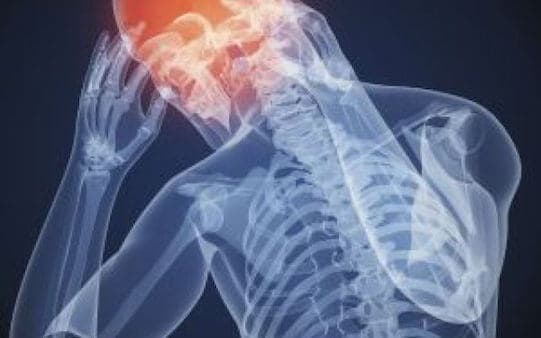Does My Child Have a Concussion?

Contrary to what I was taught in medical school, a child does not need to be knocked out, even briefly, to have a concussion. Most concussions do not involve a loss of consciousness. Concussions may not be life-threatening, but they are serious, and children who have suffered a concussion should not return to play or sports until cleared by a physician. Returning too early increases the risk of more serious injury to the brain, and a prolonged recovery period.
As we learn more about how the brain works, we are also learning more about what happens when the brain gets injured – and what to do about it. The guidelines for treatment and recovery periods have changed over the years as our understanding of concussions evolve.
Clues to a Concussion
The first recommendation for parents is to learn to recognize a concussion, and what to do if you suspect one.
An x-ray, MRI, or CT scan can’t “‘see”’ a concussion. But a parent can often see visible clues.
If you see one or more of these after a head injury, suspect a concussion:
- Loss of consciousness/responsiveness
- Slowness getting up after the head injury
- Grabbing/clutching the head
- Unsteadiness on the feet/balance problems/falling/decreased coordination
- Dazed, blank, or vacant look
- Confused/can’t recall recent events/forgets something you said
- Slowed or slurred speech
- Repeated vomiting
- Mood, behavior, or personality changes
Other reasons to pay attention include reports of any of the following:
- Seeing stars or flashing lights
- Ringing in the ears
- Double vision, blurry vision, or vision loss
- Sensitivity to light or noise
- Bad or worsening headache (or pressure in the head)
- Dizziness
- Trouble concentrating
What to do After a Concussion
After a head injury, any child who exhibits the signs, symptoms, memory problems, or visible clues of a concussion should be evaluated by a health professional.
Some symptoms may not show up for a day or two after the injury. “If in doubt, sit them out” is an important mantra for coaches and parents. Sitting them out includes sitting out from sports and school. Early rest for the brain is important for healing.
What Does Rest for the Brain Mean?
There are two main categories of brain rest; cognitive rest and physical rest, and both are equally as important to healing.
Physical rest starts with an initial 24-48 hours of physical rest (no sports, aerobic activities,or other strenuous activity) followed by a gradual and progressive return to physical activities. The speed at which a child can return to normal activities is dictated by their symptoms. Your pediatrician can help develop a comprehensive return to play schedule with you.
Cognitive rest means restricting cognitive activities such as reading, homework, and screen time (including video games and movie watching!) for a period of time to allow the brain to heal and recover. Sometimes, this can mean a partial return or temporary absence from school.
Concussion Symptoms
Headaches are common, and can initially be managed by NSAIDs like ibuprofen. However, they are not recommended for long-term use due to the risk for rebound headaches. Of course, medications should not be used to mask symptoms of a concussion to try to expedite a child’s return to athletics.
Other common symptoms of a concussion include nausea, sleep disturbance, cognitive symptoms (such as fogginess and difficulty remembering things), and emotional lability. Sleep problems should be treated with sleep hygiene measures, such as regular bedtime schedule, avoidance of heavy foods before sleep, no screen time before bed, and a dark room. Cognitive symptoms sometimes do require some academic changes or adjustments (such as extra time on tests or partial days of school). At times, a psychologist or school counselor is utilized to help children understand the temporary nature of their concussion and restriction of activities. Personal therapy and early return to light aerobic activity may help with anxiety and depressive symptoms that some children experience.
Symptoms of a concussion can wax and wane a bit as a child increases their cognitive and physical activities. However, if a conservative plan for advancing their level of activity is followed, most children show consistent gradual improvement. If your child is worsening or not improving, please contact your pediatrician.
What Doctor Should My Child See for Concussion?
Most concussions are managed by primary care providers, but in some cases, specialists are needed. A referral may be needed if a concussion is not improving as expected, there is a history of multiple concussions, or the diagnosis of concussion is unclear.
The prognosis for concussion is great. In a large study of over 2700 children ages 5 to 18 years, over 80% recovered completely and were back to normal activities within 4 weeks.
Final Thoughts
Concussions are a big deal. Recognizing possible concussions can help kids get the treatment they need to speed recovery and prevent re-injury. The Center for Disease Control (CDC) provides a nice list of resources on their HEADS UP site, which include apps, customizable materials, and videos for both children and adults to learn more about how to recognize and manage a concussion. Early recognition and treatment of a concussion can greatly increase positive outcomes in children.
References and Resources
Center for Disease Control (CDC) HEADS UP site
Halstead Marc E, Kevin D. Walter, Kody Moffatt and Council on Sports Medicine and Fitness. Sports-Related Concussion in Children and Adolescents. Pediatrics 2018;142(6); e20183074


